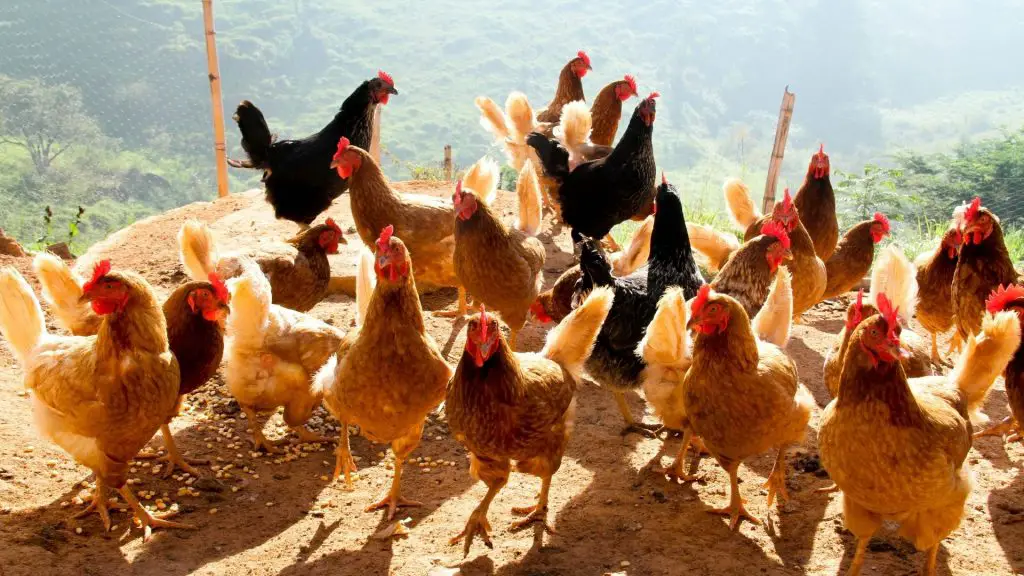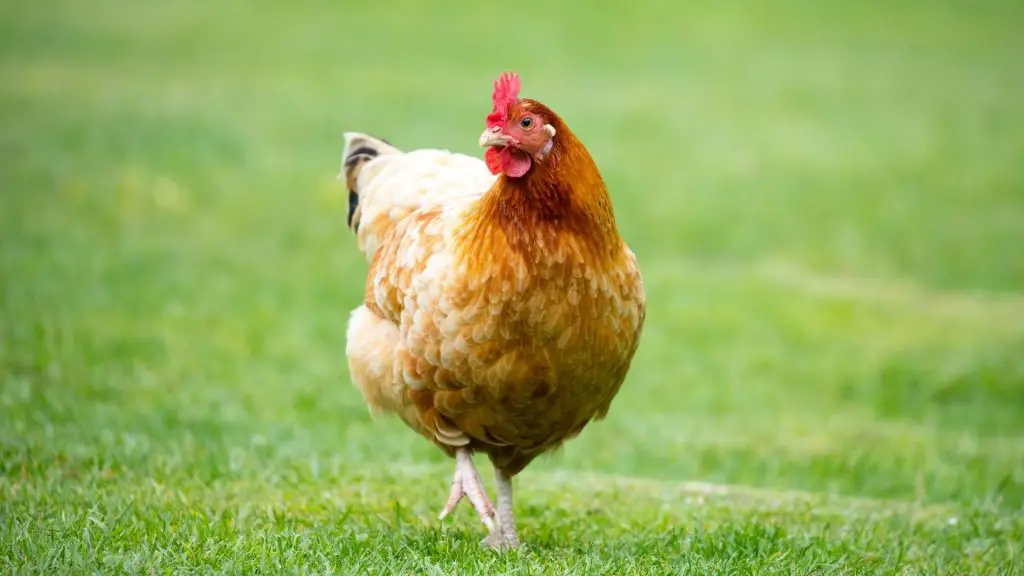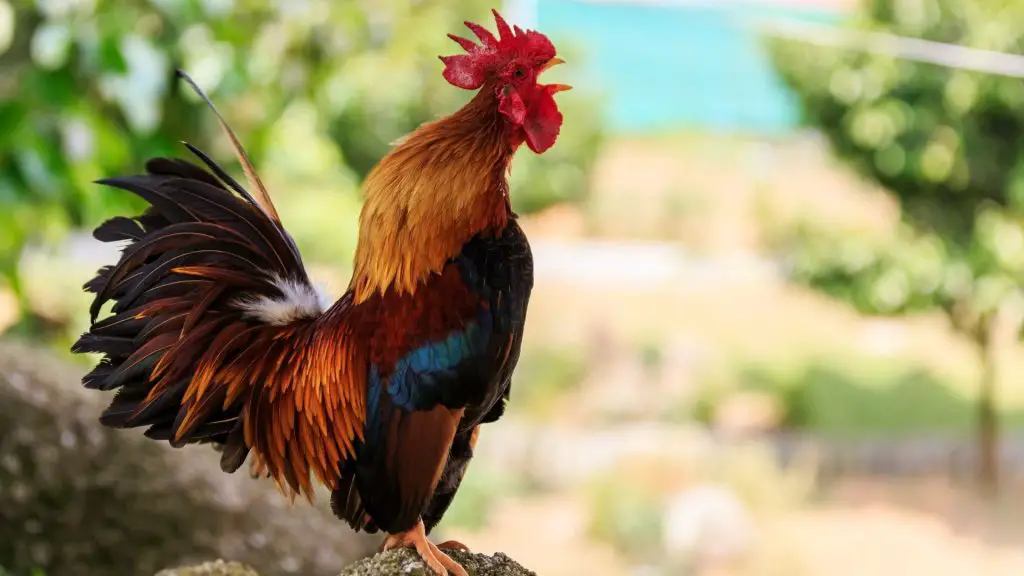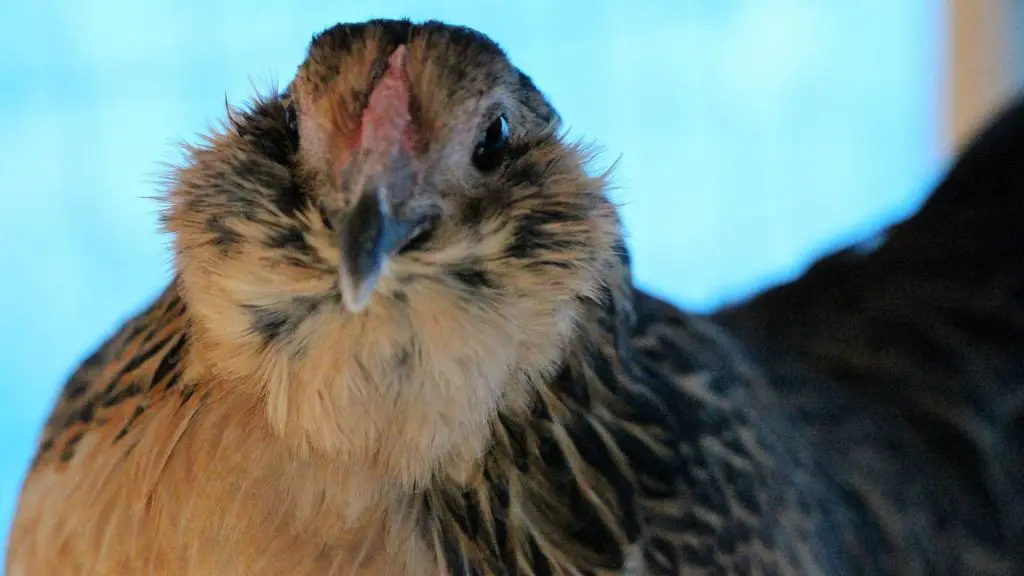You may be surprised to know that today’s lovely backyard chickens that provide you with eggs and meat for supper had wild ancestors living in the Southeast Asian jungles. They used to roam around and feed on everything they could find—unlike modern chicken breeds that feed on grain.
What is chicken? Chicken is a kind of bird that humans domesticated a long time ago. The males are called roosters, and the females are called hens. Meanwhile, a young chicken is called a chick. Known as the closest relatives of the T-rex and are omnivores, chickens are mainly raised for their meat and eggs.
Keep reading to learn more about chicken, its origin, its characteristics, and other interesting facts.
Where Does the Name Chicken Come From?

The name chicken originally comes from ‘ciccen’ in Old English, meaning ‘young fowl.’ Ancient folks used the word to refer to any baby bird but gradually specified it to hens. ‘C’s later turned into ‘CH’s in this language, forming today’s “chicken” word.
Regardless, the scientific name for these animals is “Gallus gallus domesticus.”
When Was the First Chicken Discovered?
The exact origin and time of the chickens’ discovery are still obscure.
Initially, scientists thought that chickens were domesticated around 8,000-10,000 years ago. But another study showed that it was a more recent event, traced back to at least 3,600 years ago in China and dating from 2500 – 2100 BC in South Asia.
What Is a Proto Chicken?
A proto chicken is a chicken that lived centuries ago. Proto means original or primitive (from the Greek word prōtos, meaning ‘first’). Genetically, they were almost the same as the modern birds.
It’s believed that a proto rooster fertilized a proto hen’s egg and this combination accidentally created a mutation leading to the birth of a new species progenitor (chicken). It was technically different from its parents.
Interestingly, here’s the answer to the age-old question, which came first, egg or chicken? In simple words, two non-chicken birds created a chicken egg. So, the egg came first, and then a chicken was born out of it.
What Animal Group Do Chickens Belong To?

Is a Chicken a Bird?
A chicken is a bird that falls into a separate group called the Aves. Their feathers are the most significant feature that classifies them as birds. Like birds, chickens have wings, beaks, and lay eggs.
Despite having wings, chickens can’t fly like most of their other fellow birds. They can only travel up to 15 m (49.21 ft) on a height reaching about 3 m (9.84 ft).
Is a Chicken a Mammal?
A chicken isn’t a mammal since it doesn’t have fur or hair. While mammals have mammary glands for producing milk and breastfeed their babies, chickens lay eggs and don’t breastfeed their young. Unlike mammals, chickens don’t have specialized teeth.
Chickens are birds. However, a significant difference that sets them apart from most birds is that they can’t fly.
Is a Chicken a Reptile?
A chicken isn’t a reptile. Although both species lay eggs, chickens are warm-blooded, while reptiles are cold-blooded animals. Reptiles have scales on at least some parts of their bodies, while chickens have feathers and are classified as birds (even if they have scales on their feet too).
What Is a Pullet Chicken?
A pullet chicken is a young female chicken that’s less than a year old (between 16 and 24 weeks). While looking fully grown in appearance and covered with new feathers, its body is still developing and unready to lay eggs.
Correct management of pullets, especially regarding food and light, is very important because it can enhance their eggs’ quality once they become fertile.
If they start egg-laying too early, it may lead to prolapse and other health problems. Besides, their eggs’ size may be smaller during the entire production cycle.
What Is a Mature Female Chicken Called?

A mature female chicken is called a hen. Hens are primarily raised for their meat or egg production. Some breeds called dual-purpose lay eggs adequately and also grow large enough for eating. However, they don’t grow as quickly as meaty breeds of chickens.
Commercial meat-producing chickens, referred to as fryers, grow fast and gain much more weight—about 4 – 6 lb (1.81 – 2.72 kg) at about 7 weeks and 6 – 10 lb (2.72 – 4.53 kg) at 8 – 12 weeks when they’re fully grown. However, the meaty breeds are poor at egg-laying due to their rapid growth.
They’re also smaller than males and have less glamorous feathers. Although hens have spurs, too, they’re hardly visible and not as big as those of roosters. Even their comb and wattles are smaller.
Related: What’s the Difference Between a Hen and a Chicken? | Information and Facts
Do All Female Chickens Lay Eggs?
As mentioned above, female chicken under 1-year-old and hasn’t ready to produce eggs is called a pullet. On the other hand, a mature female chicken or hen (over 1 year) is capable of laying eggs. In improved breeds, hens can lay at least 180 eggs and up to 365 eggs in good conditions.
However, most typical country chickens produce between 25 and 100 eggs a year, depending on feed, season, health, and other factors.
On the other hand, egg layer breeds like the famous White Leghorns produce eggs much faster than typical hens. The egg size increases as the hen ages; however, its shell quality and the number decrease.
Female chickens produce a cackling noise after laying an egg, which they repeat for about 5 minutes. The call also wards off predators from the nest and plays a role in their mating.
What Is a Male Chicken Called?

A male chicken is called a rooster or cock(erel). Roosters are generally taller than females and typically weigh 0.5 to 1 kg (1.10 to 2.20 lb) more. They have spurs on their legs, which they use in battles to claim territories and females.
As is common among other bird species, male chickens have beautiful, shiny, and usually colorful feathers (especially on their tail) to attract females during mating. They also have a much larger comb and wattles than female chickens, which becomes apparent even at a young age.
Unlike the infamous myth about them, male chickens (roosters) are quite generous about food. They usually let the chicks and females (hens) eat first.
You may have heard their mating call (cock a doodle doo) in the mornings. But unlike the common myth, they crow intermittently throughout the day, not just when the sun rises.
Related: Is a Rooster a Chicken? | Information and Facts
What Is the Name for a Neutered Male Chicken?
A neutered male chicken is called a capon (from the Latin word caponem). It’s a cockerel (about 16 weeks to 8 months old) that’s physically or chemically castrated or neutered for better meat quality.
In some countries like Spain, the capons are fed by force to get fat and weigh between 4 and 7 lb (1.81 and 3.17 kg).
The more common physical castration or removal of testicles is also called caponization. It must be done when the cockerel is very young because its gonads are small and easily removed. After that, the cockerel won’t be able to develop some male characteristics or will lose them if they’re already developed.
Usually, as a rooster ages, its meat gets coarse and tough, but caponization can change that. Caponized roosters grow slower and gain more fat. So, their meat becomes juicy and more tender. Unlike the intact males, the older a capon is slaughtered, the tastier its meat will be.
Is a Chicken a Domestic Animal?
A chicken is a domestic animal typically kept as livestock. Regular chickens are domesticated from the Red Jungle Fowl. A study showed their domestication must have happened at least 3,600 years ago in China and simultaneously in other areas.
One reason behind their domestication was partly because they were easier to domesticate than large mammals due to their smaller size and less dangerous nature. However, the more important reason was cockfighting.
People in ancient times were eager to watch cockerels fight, and it’s still a popular sport in some countries. Cockfighting also had a significant role in the distribution of chickens around the world.
Another influential factor in chicken domestication may have been the abundance of seeds and grains as humans started to develop agriculture. These wild birds may have been attracted to the fields and gradually fit into the human habitat.
Gradually, humans raised chickens for their eggs and meat. For centuries, they selected and mixed different breeds to attain better ones. Now, chickens are found in various sizes, shapes, and colors, with more than 350 different combinations of features.
Today’s purebred chickens are essentially the same as their predecessors that lived 100 years ago and are mainly raised as a hobby. However, raising commercial chickens is more scientific today as producers try to reach the most nutritious meat and eggs.
What Is a Chicken’s Habitat?

A chicken’s habitat is the jungle. As the name Red Jungle Fowl suggests, it used to live (and still lives) in jungles and among trees. That’s why domestic chickens still prefer to roost like their ancestors. However, most modern domestic chickens live on farms (even mega-farms) and in backyards.
Since the chickens’ domestication, human beings have started to keep them in coops for protection against predators like foxes, wolves, owls, and even cats.
However, with the growing number of free-range poultry productions, more chickens are privileged to live freely in more natural settings.
Is Chicken a Carnivore?
A chicken isn’t a carnivore. It’s a descendant of the wild fowls, which were omnivores and mainly ate seeds, insects, lizards, or even young mice. So, the typical domesticated chickens are also omnivores and can eat various foods from grains to worms, insects, kitchen scraps, grass, and more.
However, commercial chickens are usually fed simple, balanced diets of food, mainly grains.
Chickens need nutritious feed for developing their flesh, bones, feathers, and eggs. Their diet is primarily water, carbohydrates, fat, proteins, minerals, and vitamins. And a deficiency in any of these elements can cause serious health problems for them.
The diet of egg layer breeds should also contain crushed oyster shells (contains calcium) and grit to help them with egg providing and digestion. A 6-pound (2.72-kg) chicken can eat about 3 lb (1.36 kg) of food per week. They eat even more in the winter, as they burn more calories to stay warm.
Is a Chicken an Invertebrate or a Vertebrate?
Chickens are vertebrates; they have skeletons and backbones. Their avian skeleton is similar to mammals’ but much lighter to allow them to fly. However, they have proportionally smaller skulls that assist with flying. A long, flexible neck acting as a shock absorber is also prominent.
Their long necks also help them reach food on the ground more efficiently and adjust their centers of gravity when flying in a horizontal position.
One interesting fact about a chicken’s skeletal system is that some of its bones are hollow. These bones are part of its respiratory system, known as pneumatic bones. They include the skull, humerus, clavicle, keel, and pelvic girdle. Pneumatic bones also include the lumbar and sacral vertebrae.
Another influential bone set in chickens is the medullary bones. These bones provide calcium to their eggshells. A hen uses about 47% of the calcium of its body to make an eggshell.
What Is a Chicken’s Body Temperature?
Birds are technically homeothermic, meaning they produce and dissipate heat to keep their body temperature constant.
A chicken’s body temperature is usually between 105°F and 107°F (between 40.6°C and 41.7°C). A newly hatched chick can have a body temperature of 103.5°F (39.7°C), which gradually increases until it becomes stable at about 3 weeks old.
Typically, the body temperature of smaller breeds is higher than the larger ones. Males’ body temperatures are also a little higher than females due to their higher metabolism rate and muscle mass. Besides, their activities can raise this temperature.
How Many Chickens Are There in the World?

There are about 25 billion chickens around the world, equating to nearly 4 chickens per person. The chicken population has increased significantly due to human improvements in their breeding.
Is a Chicken Related to a Dinosaur?
A chicken is related to a dinosaur. All birds evolved from dinosaurs, and chickens are no exception. They’re the full evolution line of dinosaurs giving rise to the T-rex.
This is the evolution line of the domestic chicken (which is the T-rex’s genetic relative):
- Original theropod
- Ceratosauria
- Coelophysis
- Ornitholestes
- Tyrannosauridae (T-Rex)
Pennibrachia that were wing-like arms first appeared in Ornithomimosauria as a sexual attraction, not for flight. As noted above, the closest living relative of T-rex is the domestic chicken. Analysis of a T-rex fossil’s blood vessel that lived 68 million years ago in Montana has proved it.
The typical modern chickens are descendants of 4 jungle fowl species living in Southeast Asia 50 million years ago.
Based on the Gallus ancestor fossils, they sought and spread into warmer climates during periods of glaciation and dispersed even further north as warmer temperatures allowed for the evolution of various species and subspecies.
How Old Is the Oldest Chicken in the World?

A Red Pyle chicken named Matilda that lived for 16 years was the first chicken certified by Guinness as the world’s oldest chicken. The chicken was the assistant of a magician and died in 2006.
The oldest chicken in the world today is named “Old Hen.” Based on the owner’s claim, it’s going to turn 20 years old. Gerard O’Leary, who runs O’Leary’s Poultry in Macroom says he received this bantam hen in the summer of 2001 when he was 13 years old, and he’s about 33 years old now.
So, this old chicken can be the new record-holder!
Related: What Does a Chicken Look Like? | Information and Facts
List of Sources
Definitions Relating to Poultry Incubation and Embryology Projects
